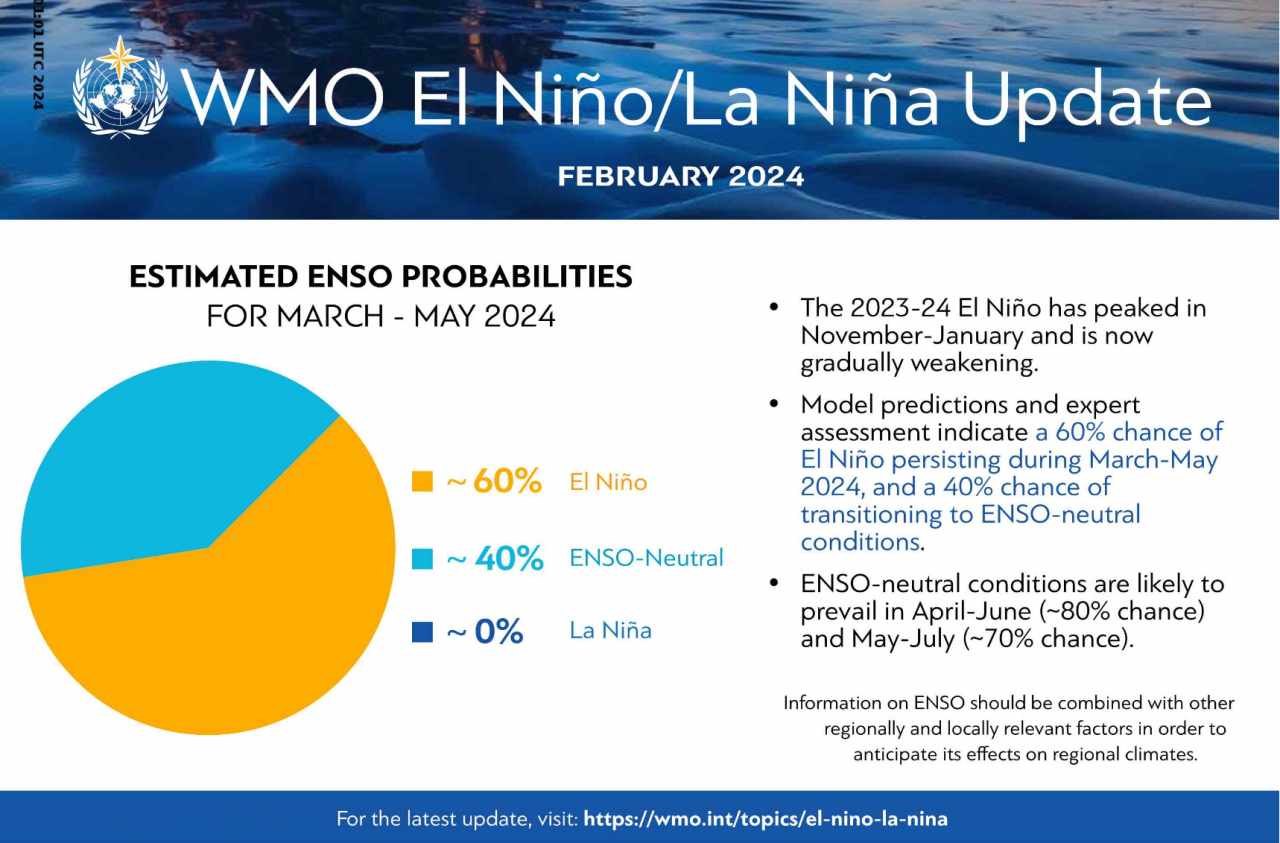Hot summer temperatures to persist due to El Nino impacts
By Lee Jung-jooPublished : March 6, 2024 - 15:21

As ocean surface temperatures in the Pacific Ocean gradually decrease, climate conditions will most likely switch to a neutral state between April and June, according to the World Meteorological Organization.
El Nino is a natural phenomenon in which ocean surface temperatures in the eastern and central Pacific remain 0.5 degrees Celsius higher than usual for more than five months. The El Nino phenomenon officially began between May and June 2023 and was recorded as one of the five strongest El Nino phenomena by the WMO since it was first recorded in 1951.
According to the WMO, there is a 60 percent chance of El Nino persisting from March until May and an 80 percent chance for it to switch to neutral conditions between April and June. Though the course remains uncertain, there is a chance of La Nina -- where ocean temperatures remain 0.5 C lower than usual for five months -- developing around fall.
The El Nino phenomenon last year was at its strongest from November to January this year, as a new monthly temperature record was set “every month since June 2023,” according to the WMO.
“El Nino has contributed to these record temperatures, but heat-tripping greenhouse gases are unequivocally the main culprit,” said WMO Secretary-General Celeste Saulo.
According to the Korea Meteorological Administration, the recent El Nino phenomenon was also one of the reasons for South Korea to see unusually warm temperatures in wintertime with more rain and snow. When El Nino occurs, the convection activity in the western Pacific Ocean is less active than normal, which causes high pressure circulation to occur near the Philippine Sea and east of Japan. This causes hot and humid southern winds to blow into Korea, resulting in higher temperatures and more precipitation.
From June 2023 to January this year, global ocean surface temperatures were 2 C above the average sea level temperatures from 1991 to 2020. Particularly in January, sea level temperatures reached as high as 21.1 C, same as the average sea level temperature in August 2023.
However, even though the El Nino phenomenon is weakening, the WMO added that it expects to see “above-norm temperatures” in the next three months as El Nino impacts normally persist into the second year. The KMA also added that East Asia usually “experiences a wide range of weather events” when El Nino switches to a neutral state, meaning that weather forecasting may become more difficult in the next coming months.







![[Weekender] How DDP emerged as an icon of Seoul](http://res.heraldm.com/phpwas/restmb_idxmake.php?idx=644&simg=/content/image/2024/04/25/20240425050915_0.jpg&u=)



![[KH Explains] No more 'Michael' at Kakao Games](http://res.heraldm.com/phpwas/restmb_idxmake.php?idx=644&simg=/content/image/2024/04/28/20240428050183_0.jpg&u=20240428180321)







![[Herald Interview] Mistakes turn into blessings in street performance, director says](http://res.heraldm.com/phpwas/restmb_idxmake.php?idx=652&simg=/content/image/2024/04/28/20240428050150_0.jpg&u=20240428174656)
